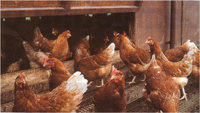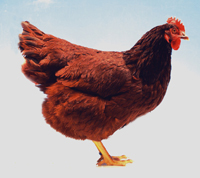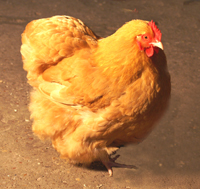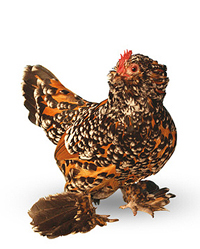Chickens for Beginners: Sourcing your Chickens Your priorities need sorting out before you get any chickens: do you want lots of eggs per week, or only a few, some meat, beauty, conserve rare breeds, pets or weeding of a vegetable garden? No single type or breed will fulfill all of these requirements and it is so important that you like the look of the hens you buy – they will become part of the family. Link to Welfare Hybrids versus pure breeds
The original outdoor hybrid, especially developed for free-range systems with hardiness, good feathering and living about 4 years, is the Black Rock. There are now several others available such as the Bovans Nera, Calder Ranger, Speckledy, Columbian Blacktail, White Star, BlueBelle, which are more productive than pure breeds, hardier than the commercial hybrids and provide different colours of birds or eggs. A little more expensive than the brown hybrids. Best production 250-275 eggs per year for 3-4 years.
Pure breeds are the traditional breeds of poultry, developed in various countries for various purposes, mostly since Victorian times. They are also used for exhibition and have Standards for shape and colour. On the whole they only lay eggs during the longer days. They can produce meat and some of the rarer breeds are particularly beautiful. They live and lay eggs for 4-7 years. The light breeds will lay the most but can be a bit flighty and nervous. The heavy breeds lay less and eat more but will produce meat as well. Pure breeds are the most expensive. Expect 100-250 eggs per year, depending on breed and age. Bantams lay small eggs but eat less and are great for children to keep and look after.
|







